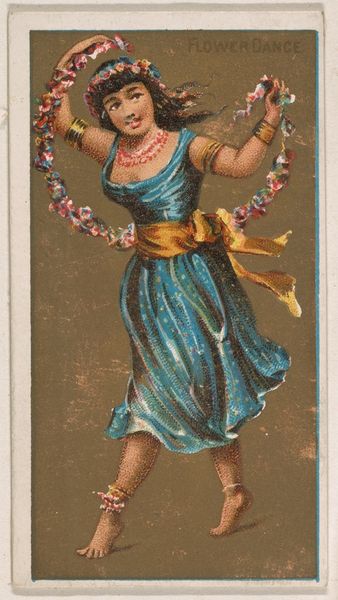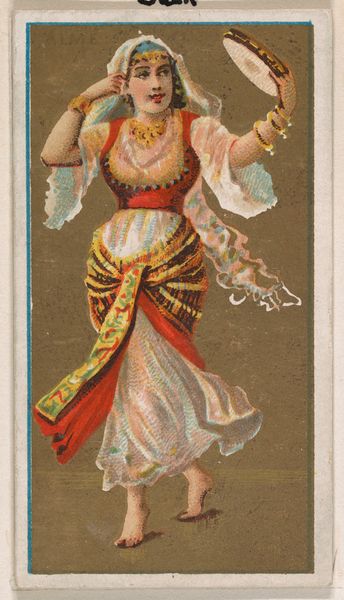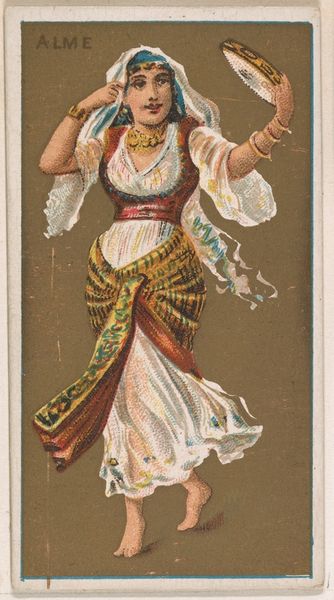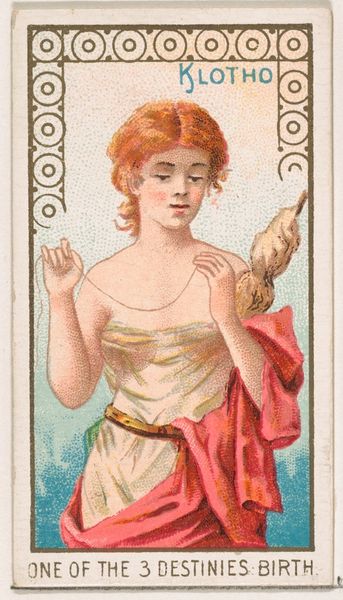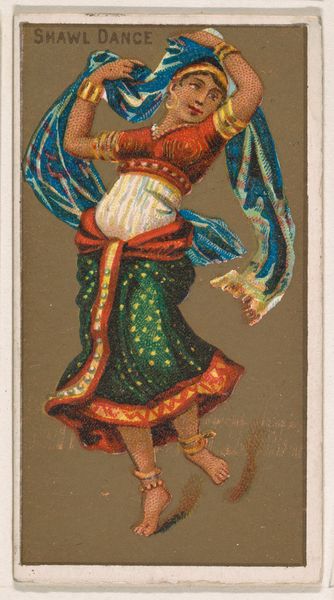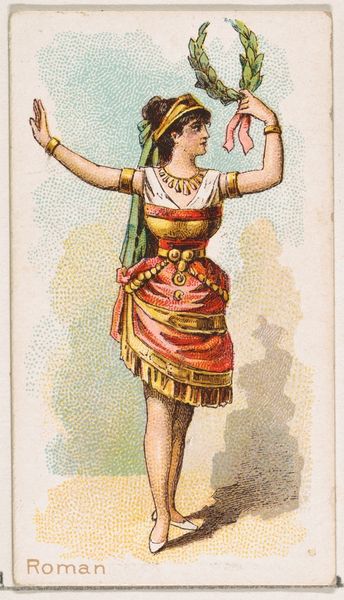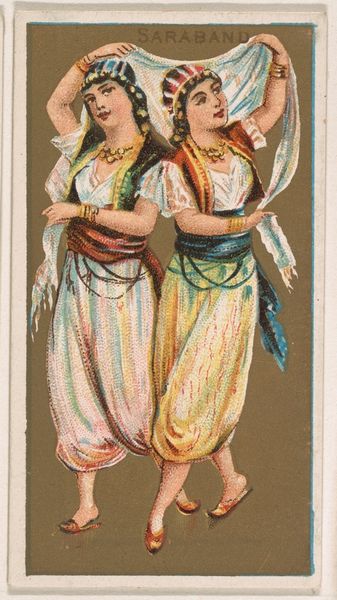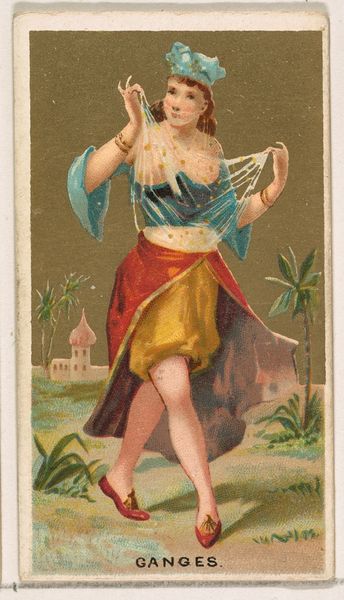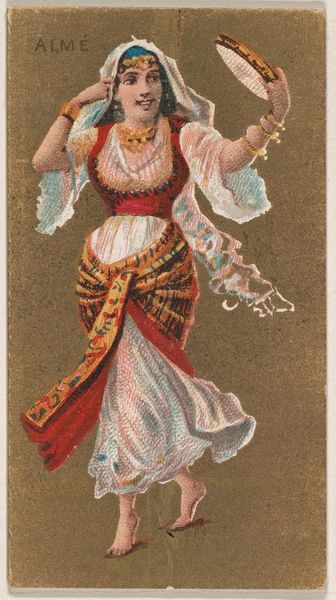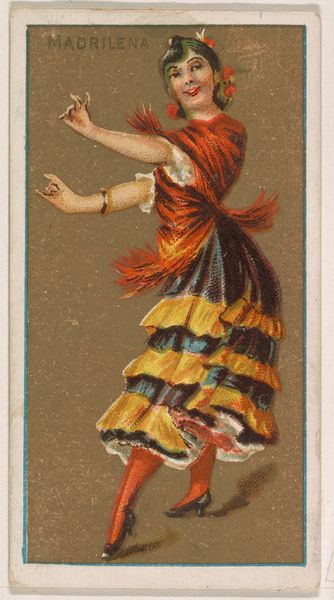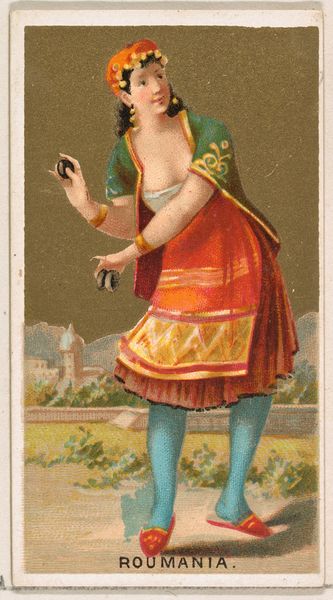
Bayadere, from National Dances (N225, Type 1) issued by Kinney Bros. 1889
0:00
0:00
#
portrait
#
16_19th-century
# print
#
orientalism
#
watercolour illustration
#
portrait art
Dimensions: Sheet: 2 3/4 × 1 1/2 in. (7 × 3.8 cm)
Copyright: Public Domain
Editor: This small print, titled "Bayadere" by Kinney Bros. Tobacco Company, dates back to 1889. It looks like a watercolor illustration. What stands out to me is the emphasis on her exotic costume. What can you tell me about it? Curator: Well, consider this as a trade card. It circulated with tobacco products. Suddenly, its existence pivots from high art to mass-produced ephemera. Note the watercolor medium; easily reproduced on a commercial scale. Editor: So, the choice of watercolor was more about production than aesthetics? Curator: Precisely. This is Japonisme meeting Orientalism filtered through the lens of American consumer culture. The materials and the means of production directly informed its creation. How does the subject -the dancer - play into this? Editor: I guess the "exotic" subject matter would have appealed to consumers at the time. It reinforces cultural stereotypes through readily available and affordable goods. So this small card becomes a vehicle for larger cultural narratives. Curator: Exactly! Its value lies not in its aesthetic "aura," but in the cultural machinery it represents: labor, materials, consumption, and the dissemination of orientalist tropes through commercial channels. A luxury good creating accessibility. Editor: It's amazing how a seemingly simple print can reveal so much about the intersection of art, industry, and cultural perceptions. Thanks, this was very insightful. Curator: It’s all about looking at the forces of production. Thanks for helping to bring them to light.
Comments
No comments
Be the first to comment and join the conversation on the ultimate creative platform.

